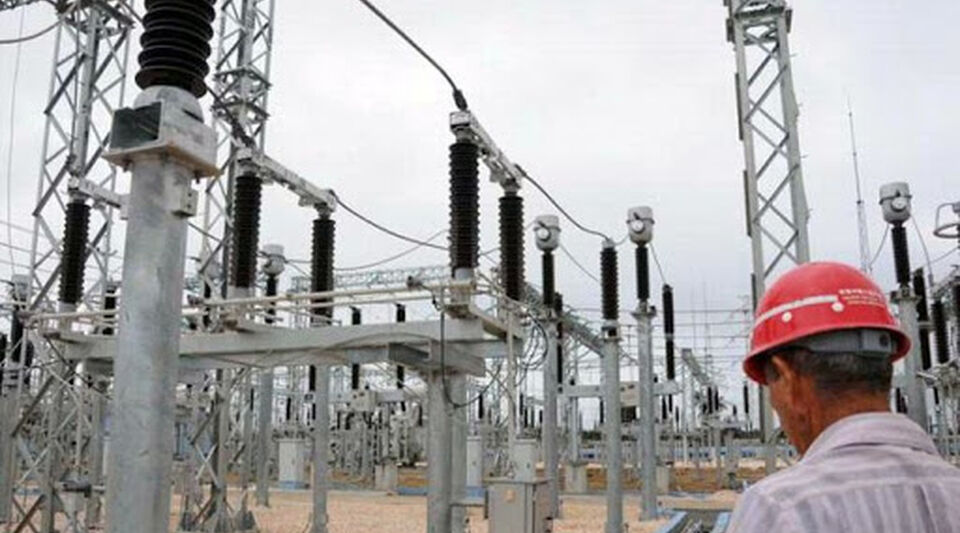Every day, more workers in the state electricity sector leave their jobs in Cuba: in the first six months of 2022, 21 per day left their jobs; in the three following months, while the country was experiencing the prolonged blackouts of the summer, there were 26. In total, 8,089 operators ceased their activities in the first nine months of last year and, at this rate, it is estimated that there were some 10,000 at the end of the month. anus.
The figure, provided this Sunday in an article in the state newspaper workers, makes that of 2021 pale, when 6,612 electricians left their jobs. The text does not mention migration and refers only to the exodus to the private sector, personified by an industrial mechanic from Cienfuegos, José Manuel Hernández, who nostalgically remembers his 20 years at the Carlos Manuel de Céspedes thermoelectric plant, but abandoned it for the paltry salary he earned.
“The money I earned was not enough for me at all. Then a friend told me that he was forming a small private company, one of those called MSMEs, to produce food and I went with him”
“The money I earned was not enough for me at all. Then a friend told me that he was forming a small private company, one of those called MSMEs, to produce food and I went with him. Now my salary is more than double what I earned at the plant,” he reveals in the middle of a heartfelt story about his love for the factory.
According to the author of the text, the general secretary of the union bureau of the thermoelectric plant, Carlos Rafael Quintero Cabrera, pointed out in the last plenary session of the Provincial Committee –held at the end of December– that there were more than 40 vacancies at the plant and that the effort to generate electricity was enormous. “The workers have to feel materially and morally stimulated,” he said.
The trade unionist then explained that they were trying to increase the qualifications of those who followed, but the training courses take up to five years. “The concern is how we are going to retain that labor force because they leave for the MSMEs“, said.
Last October, television broadcast a report from the Antonio Guiteras thermoelectric plant, in Matanzas, in which one of its workers, Yoandry Flores, head of the block and control room operator, attributed the collapse of wages in the sector to the Ordinance Task . “Mostly, what the operations staff decides to leave is because of the salary shortage. At one time, before the reorganization, we were one of the companies that favored itself the most in terms of salaries, you could cover your needs. After the reordering we fell into a very low step”, he stated.
Salaries, after the entry into force of the Ordering Task in January 2021, remained for workers in the electricity industry between 4,000 and 8,000 pesos per month, although with options to increase the payroll depending on their tasks, in addition to the power of the company to increase payments according to efficiency, results and other concepts.
Salaries, after the entry into force of the Ordering Task in January 2021, were between 4,000 and 8,000 pesos per month for workers in the electricity industry.
But the note of workers He speaks of a drop in personnel that dates back to the last four years. Ulises Guilarte De Nacimiento, member of the Political Bureau of the Party and general secretary of the CTC, referred to that deadline and warned of the priority it is to address this situation. “It cannot be alien to union work, because of what it means for the tasks that the Government proposes, and it must be a reason for prioritized attention,” he explained.
George Batista Pérez, general secretary of the National Union of Energy and Mining Workers, told workers in the middle of last year that there was “a very serious problem in the sector”.
“It is the labor fluctuation linked to difficulties with food, transportation and salary. With Decree 53, a salary increase was promoted based on efficiency, but it does not cover expectations based on the distribution of profits,” said the official, which also marked the Ordering Task as a turning point for the sector. As he explained, some of the traditional benefits of employees in the electricity sector were repealed with the new regulations.
Among them, he cited the drop in piecework due to the lack of financing (in turn the result of a lack of means), the scarcity of sources that would allow the distribution of profits, and the scarcity of money for technological improvements that would alleviate the workload. . As a result of all this, working conditions have only worsened. But the allocation for the purchase of food has also been eliminated and the workers who had a differentiated offer are totally unprotected if the high prices approved are taken into account.”
The union that he leads, the text affirms, has proposed 12 actions to recover the morale of its workers and avoid constant casualties, but when it comes to specifying them they seem rather theoretical. It deals with the “establishment of a care and follow-up system with the administrative departments for the gradual and systematic improvement of the working and living conditions of the workers, the performance of emulation checks with the required frequency, the review and evaluation of the Collective Labor Agreements and payment for high performance”.
The text, which adds that time will have to pass to see the effectiveness of these approaches, adds that something visible and immediate is being done at the Carlos Manuel de Céspedes thermoelectric plant: a new system to increase wages, but about which it does not give details. nor is it known how it is working.
Workers in the electricity sector are subjected to constant stress due to the situation that the National Energy System is going through and the constant efforts that they must make with fewer hands.
Workers in the electricity sector are subjected to constant stress due to the situation that the National Energy System is going through and the constant efforts that they must make, with fewer hands, throughout the Island. This Sunday the deficit returned to high numbers, up to 513 megawatts during peak hours, at 7 p.m.
The population of the eastern experienced four prolonged blackouts in 10 days between February 13 and 22 and their discomfort is reflected on social networks. “We arrived at the month of March 2023, the same as March 2022. Please, use empathy, put yourself in the place of those from the Center East! Use intelligence. We have spent a year without rest, without tranquility, because the days of December and January that there was no lack of electricity, stress, the fear that if it left or was removed they would still be present. Seek help from world experts if we don’t have it here, let’s not be so proud and self-sufficient and inefficient,” he cries a client to whom the majority of users agrees.
The Minister of Energy and Mines, Vicente de la O Levy, forwarded two weeks ago that an attempt would be made to mitigate the situation for half of the Island as of March with the return of the Lidio Ramón Pérez thermoelectric plant, from Felton, in Mayarí (Holguín) and the transfer to the south of one of the eight patanas located in the north of the Island. hardly anyone expects any patch to work at this point and the heat is already on the prowl.
________________________
Collaborate with our work:
The team of 14ymedio He is committed to doing serious journalism that reflects the reality of deep Cuba. Thank you for accompanying us on this long road. We invite you to continue supporting us, but this time becoming a member of our newspaper. Together we can continue transforming journalism in Cuba.








